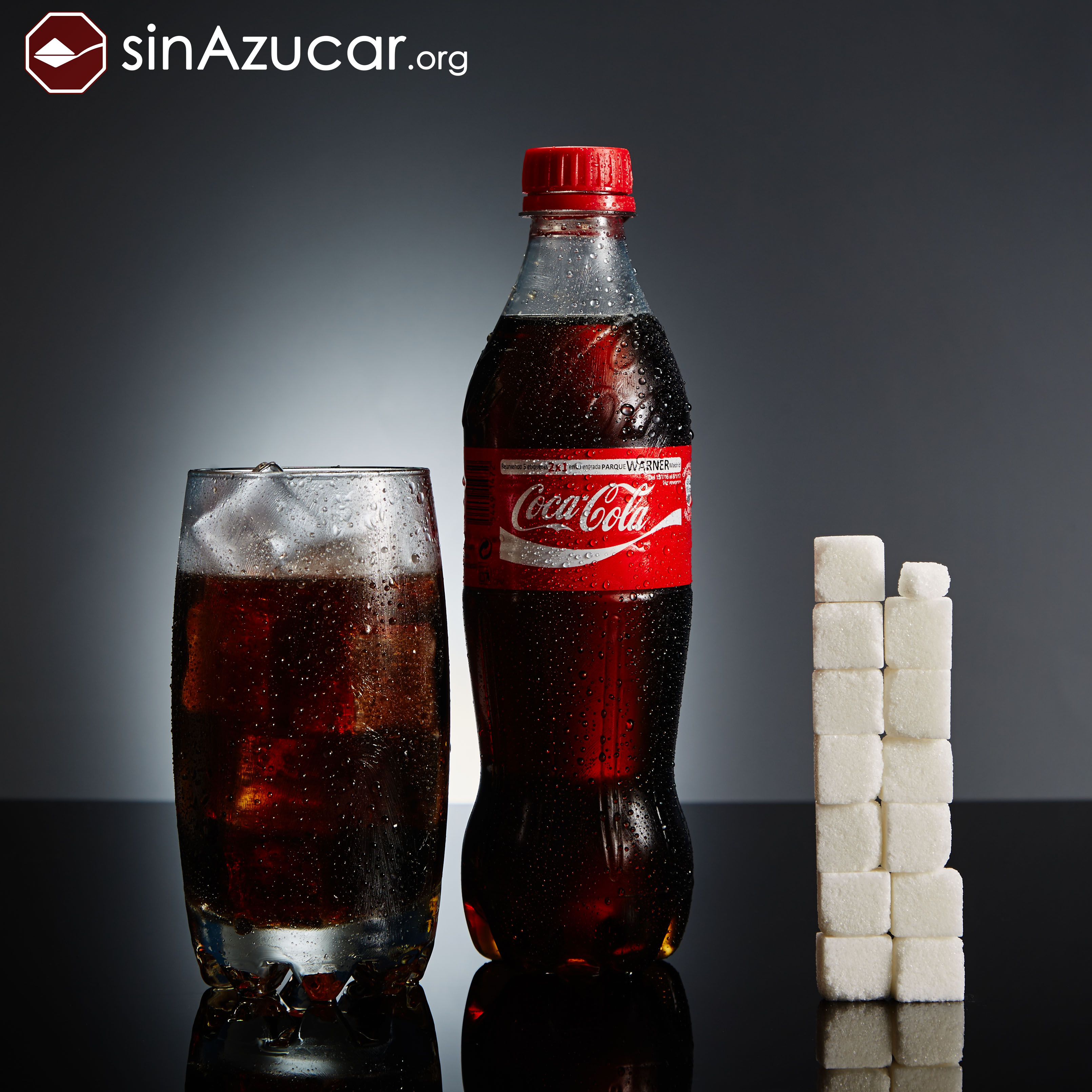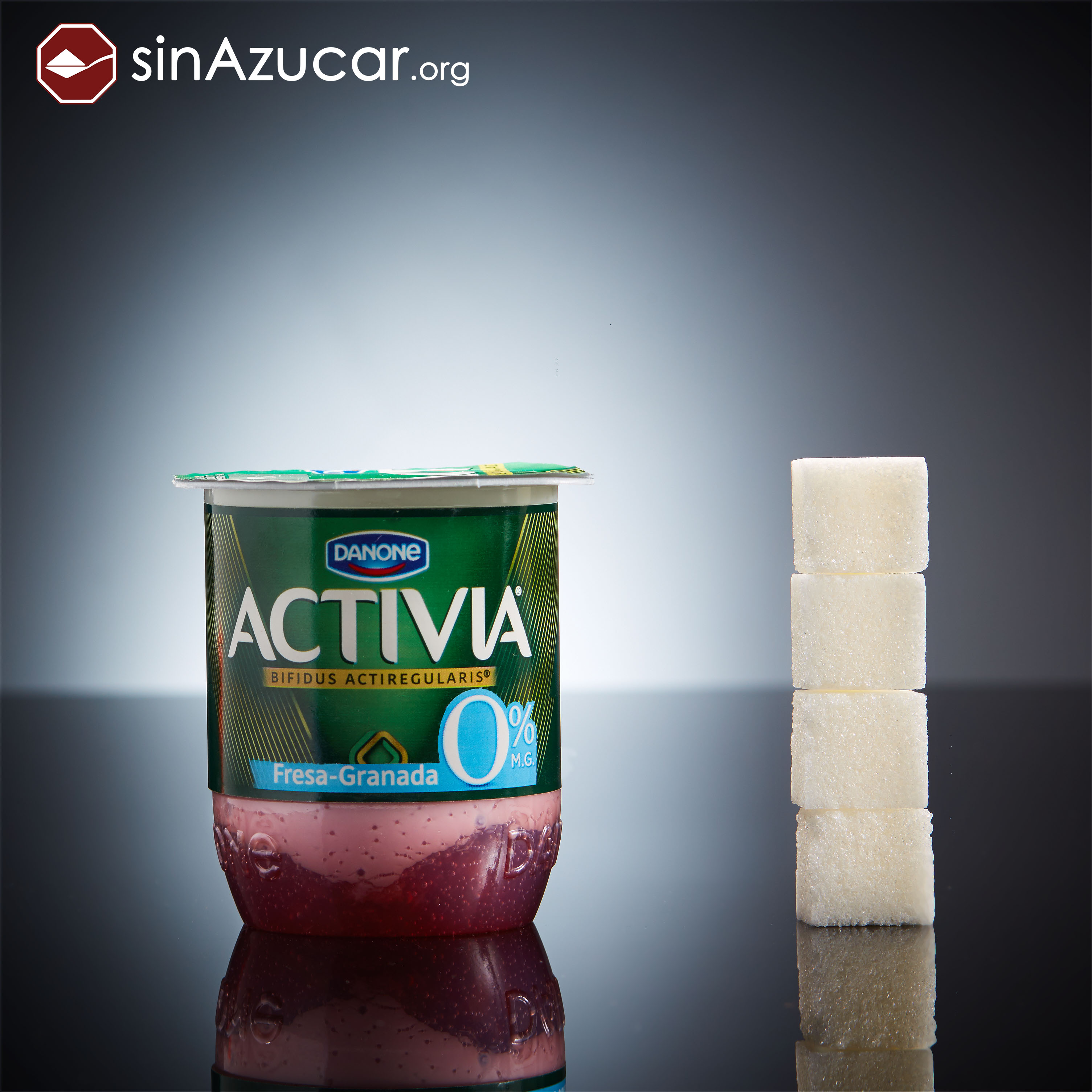The sinAzucar.org initiative reveals the hidden sugar in processed foods that we consume in our day to day life.
Their objective is to photograph products that are consumed on a regular basis and accompany the photographs with the sugar content of the food, in the form of cubes. Thanks to this initiative we can discover, amongst other things, that the content of a Starbucks coffee (mocca white venti variety, with cream and chocolate syrup) is 80 grams of sugar, almost the entire sugar content recommended by WHO for two days, or that a 0% fat yogurt contains 4 sugar cubes.
Tania Mesa – Nutritionist and Nurse from Neolife
The World Health Organization (WHO) recommends a maximum sugar consumption of 10% of the total caloric intake (about 70gr per day).
We are all aware that excessive sugar consumption is harmful to health as it causes weight gain and obesity, whilst the risks of suffering from various health problems such as type 2 diabetes, cardiovascular disease, tooth decay and some types of cancer increase exponentially. We often eliminate sugar from our day to day lives, but we continue to consume products rich in sugars as the sugar is hidden in some unexpected foods.
According to a study published in the American Journal of Clinical Nutrition, people who eat too much sugar are 10% more likely to die prematurely. That is why the World Health Organization (WHO) recommends reducing the consumption of ‘free sugars’ to less than 10% of the total caloric intake each day whilst asserting that a reduction to below 5% of caloric intake each day can produce additional health benefits.
The majority of human beings need between 2000 and 3000 kcal, depending on sex, age, body composition, physical activity… As such, if you consider that 1 gram of sugar contributes approximately 4 kcal of your daily intake, then the daily sugar requirements recommended by WHO would amount to 50 to 70 grams (for 10%) and 25 to 35 grams (for 5%).
The problem is not the sugar we add to our diet, but the amount of food – often “healthy” or not sweetened to the palate – that contain hidden sugars which we eat every day in our diet. In some cases, we could never imagine that they would contain such a large amount of sugar.
A new project, sinAzucar.org, is attempting to unmask the hidden sugar within our food, some of which are supposedly “healthy”.
In the Neolife blog we have spoken many times about sugar, including the negative effects sugar can have on your health, the amount of sugar contained in processed foods, soft drinks etc. but this time we want to show you the truth as “an image is worth a thousand words”.
Thanks to a project created by Antonio Rodríguez Estrada, www.sinazucar.org, we are able to visualise the everyday foods that deceive us on a daily basis. This initiative consists of photographing products that are consumed on a regular basis and accompanying the photographs with the sugar content of the food, in the form of cubes.
We all know that Coca-Cola contains a lot of sugar -a 500ml bottle contains 53g of sugar, which is equivalent to 13.25 lumps (the recommended daily intake of sugar)- and that this is also the case with other sugary drinks, such as a can of Monster, –which contains 60 grams of sugar (15 cubes) per 553ml.

However, surely what we did not know is that a Starbucks coffee (mocha white venti variety, with cream and chocolate syrup) contains 80 grams of sugar -that is, 20 cubes, almost your recommended daily sugar intake for two days-, a bottle of 250 ml of César Florette sauce contains 24 g of sugar (6 cubes) and a small tomato brik (brick) (210 ml) contains 16g of sugar (4 cubes).
altSugars added into a Starbucks coffee – sinAzucar.orgalt
But perhaps the most impressive (or shocking) is to visualise that a Nestlé baby yoghurt contains 9 grams of sugar, or that eight María cookies contain 3 cubes or that there are 4 cubes in a 0% fat yoghurt yet these are recommended to us all as part of a diet.

Therefore, it is important to reduce the amount of table sugar that we add to our drinks to the maximum… but it is even more important to identify and eliminate all the products that are rich in “added sugars”, which, as we have just seen cause us to consume enormous amounts of sugar every day without even realising the truth.
